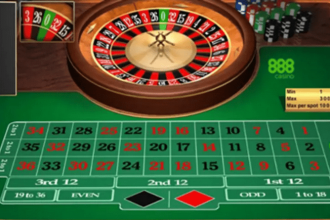Roulette, often referred to as the “Queen of Casino Games,” is more than just a captivating game of chance. Beneath its mesmerizing spins and bets lies a realm deeply rooted in physics. From the initial release of the ball to its final resting place, a series of physical events, governed by age-old laws, come into play.
For those who love the thrill of the game but prefer the convenience of their own space, platforms now allow enthusiasts to play Roulette from home. But whether digital or physical, the science behind the game remains fascinating. Let’s delve deeper.
The Dynamics of the Spin
Every croupier has a unique style, a signature spin. This spin determines the initial velocity and trajectory of the ball. Factors like the force applied, angle of release, and even the croupier’s posture can influence the ball’s journey.
Centrifugal Force and Its Role
As the wheel spins, the ball is subjected to centrifugal force, pushing it outward. This force, combined with gravity, creates a delicate balance, influencing the ball’s movement and eventual descent towards the wheel’s base.
The Taming of Chaos: The Ball’s Bounce
Once the ball starts its descent and hits the wheel’s separators, chaos ensues. The ball bounces unpredictably, and while it might seem entirely random, the elasticity of the ball, the angle at which it strikes, and the speed of the wheel all play a part in determining its final resting pocket.
The Influence of External Factors
Temperature and humidity can subtly influence the game. Materials expand or contract with temperature, potentially affecting the wheel’s balance or the ball’s trajectory. Similarly, higher humidity can increase friction, altering the ball’s deceleration rate.
Modern Attempts at Prediction
With advancements in technology, some enthusiasts have turned to gadgets and software in attempts to predict outcomes. While these tools might offer insights, the inherent unpredictability of the game, combined with casino countermeasures, makes consistent prediction a challenging endeavor.
The Material Science Behind the Wheel
The choice of materials for the roulette wheel and ball can significantly influence the game’s dynamics. Historically, wheels were made of hardwood, but modern wheels often incorporate other materials like metal and ABS plastic. The ball, traditionally made of ivory, is now typically crafted from nylon, acetal, or phenolic. The interactions between these materials, their wear and tear, and their response to environmental factors can subtly affect the game’s outcome.
The Geometry of the Game
The design of the roulette wheel is no accident. The placement of numbers, the depth and shape of pockets, and the wheel’s overall geometry are meticulously crafted to ensure randomness. Any slight alteration in design could introduce biases, which is why manufacturers adhere to strict standards.
Aerodynamics and Air Resistance
While often overlooked, the role of aerodynamics in roulette is crucial. The ball’s design, its surface texture, and even the design of the wheel can influence air resistance. In a game where millimeters can determine the outcome, the aerodynamic properties of the ball and wheel play a subtle yet significant role.
The Human Element: Croupier Techniques
While the game is governed by physics, human elements introduce variability. Croupiers undergo rigorous training to ensure consistency in their spins, but individual techniques and styles can introduce slight variations. Over time, seasoned players might even recognize and anticipate these nuances, adding another layer of strategy to the game.
Casino Countermeasures: Ensuring Fair Play
Casinos are well aware of the scientific aspects of roulette and the attempts by some to exploit them. As a result, they employ various countermeasures. Regular maintenance of wheels, changing ball types, and even rotating croupiers are strategies employed to ensure the game remains unpredictable.
The Psychological Science: Player Behavior and Perception
Beyond the physical and environmental factors, there’s a psychological dimension to roulette. How players perceive outcomes, their reactions to wins and losses, and their betting strategies are all influenced by cognitive biases and patterns. Understanding the psychology behind player choices can be as fascinating as the game’s physics.
Conclusion
Roulette is a symphony of science, chance, and human behavior. Its enduring appeal lies not just in its unpredictability but also in the myriad of factors that come into play with each spin. From the material science of the wheel to the aerodynamics of the ball, and from the techniques of the croupier to the psychology of the player, roulette is a game that continues to fascinate and challenge our understanding of chance and strategy.















